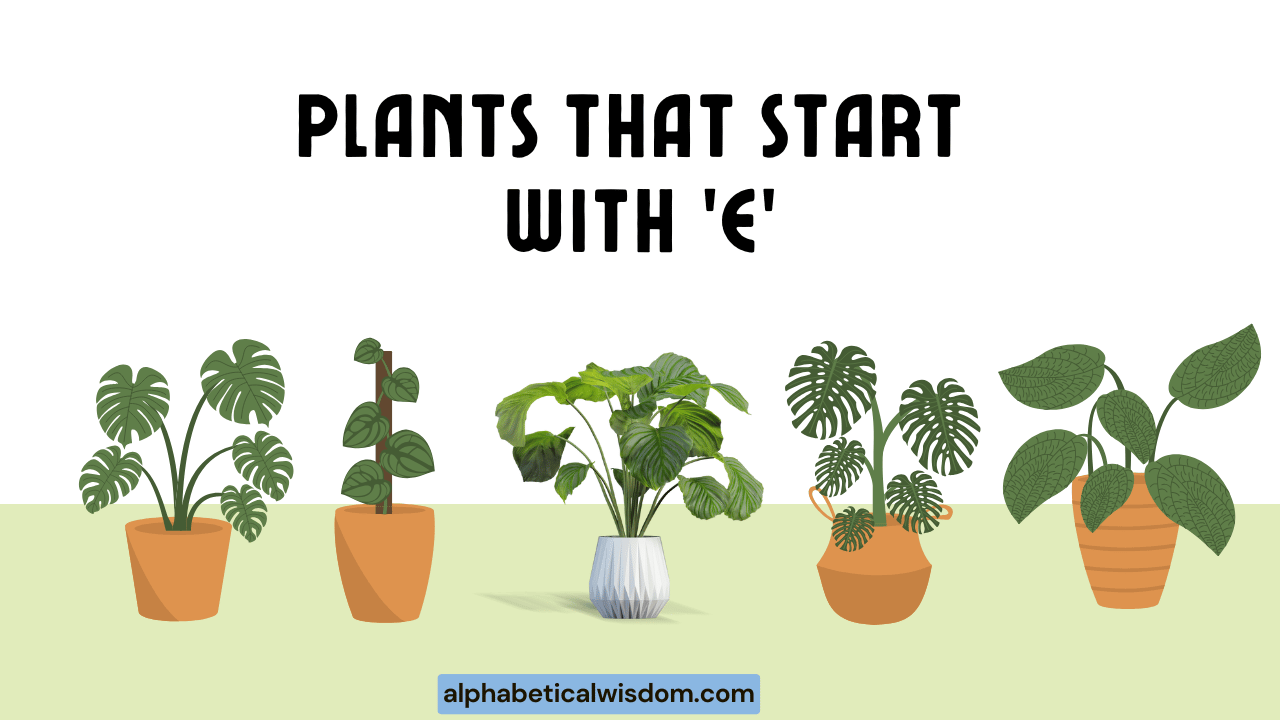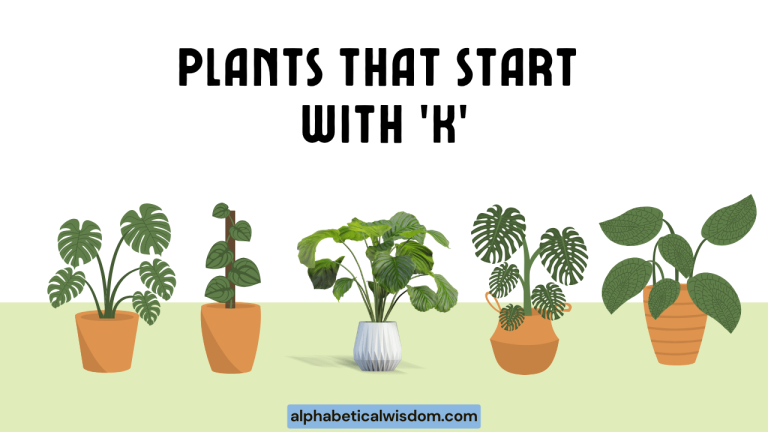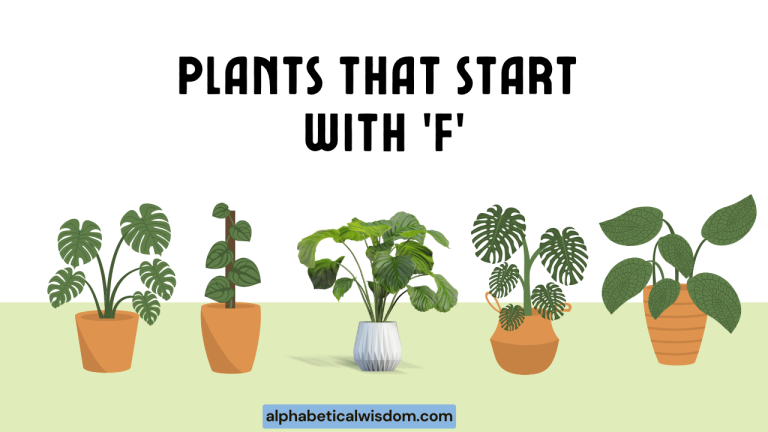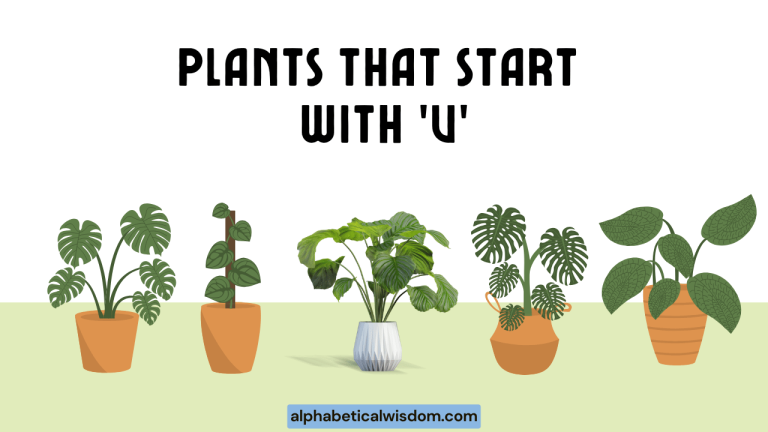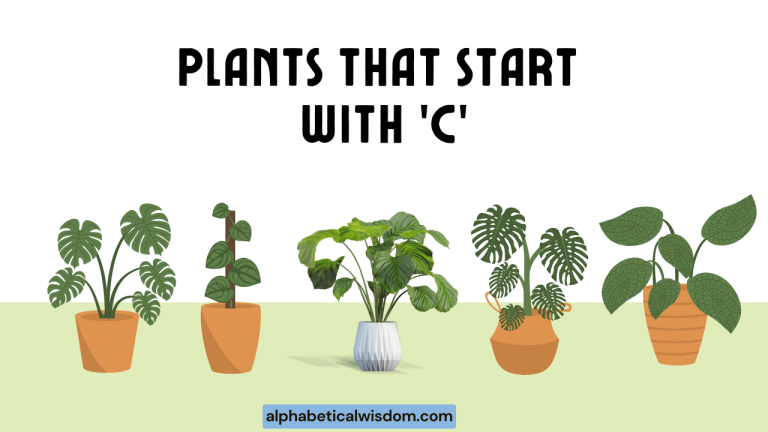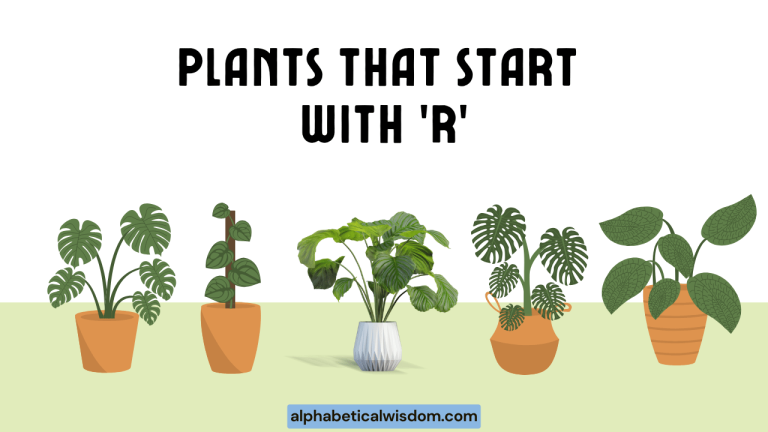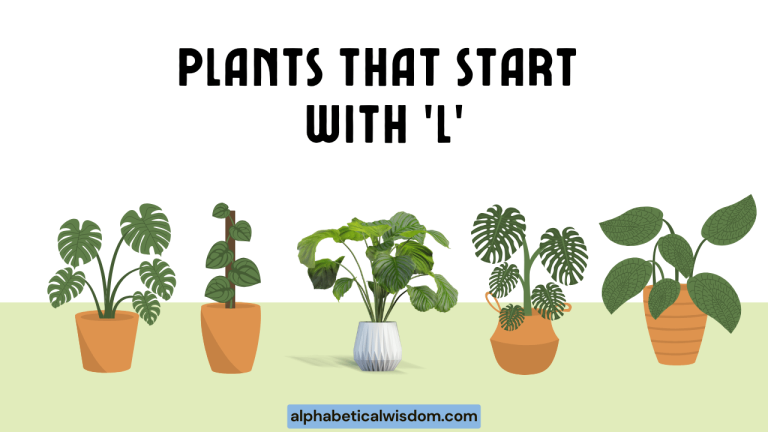Exploring “E” Plants: A Grammatical Guide to Botanical Nouns
Understanding nouns, particularly those referring to plants, is crucial for building a robust vocabulary and mastering English grammar. This article focuses on plant names that begin with the letter “E,” exploring their grammatical functions, usage, and common mistakes.
Whether you’re an English language learner, a botany enthusiast, or simply looking to expand your knowledge, this comprehensive guide will provide you with the tools to confidently use these botanical nouns in your writing and speech.
By delving into the world of “E” plants, we’ll uncover the intricacies of noun classification, singular and plural forms, countability, and proper usage in various contexts. Through detailed examples, practice exercises, and helpful tips, you’ll gain a deeper appreciation for the nuances of English grammar and the fascinating world of plants.
Table of Contents
- Introduction
- Definition of Plant Nouns
- Structural Breakdown of Plant Nouns
- Types and Categories of “E” Plants
- Examples of “E” Plants in Sentences
- Usage Rules for Plant Nouns
- Common Mistakes with Plant Nouns
- Practice Exercises
- Advanced Topics in Plant Noun Usage
- Frequently Asked Questions
- Conclusion
Definition of Plant Nouns
In English grammar, a noun is a word that represents a person, place, thing, or idea. Plant nouns, specifically, refer to various types of plants, including trees, flowers, herbs, vegetables, and fruits. These nouns can be further classified based on several criteria, such as countability (countable vs. uncountable) and specificity (common vs. proper).
Countable nouns are those that can be counted and have both singular and plural forms. For example, “eggplant” is a countable noun; we can have one eggplant, two eggplants, and so on. Uncountable nouns, on the other hand, cannot be counted and typically do not have a plural form. While less common with plant names, certain collective terms or terms referring to plant parts might fall into this category (e.g., “foliage”).
Common nouns refer to general types of plants (e.g., “elm,” “elderflower”). Proper nouns, in contrast, refer to specific, named varieties or cultivars of plants and are always capitalized (e.g., “Emerald Green Arborvitae”). Understanding these distinctions is essential for using plant nouns correctly in your writing.
Structural Breakdown of Plant Nouns
The structure of plant nouns is relatively straightforward. Most plant nouns are single words (e.g., “endive,” “eucalyptus”).
However, some plant names consist of multiple words, often combining a descriptive adjective with a noun (e.g., “English ivy,” “eastern hemlock”). These multi-word names function as a single noun phrase.
The grammatical gender of plant nouns is typically neuter, meaning they are referred to using the pronoun “it.” However, in certain contexts, particularly when discussing plants in a more personal or metaphorical way, other pronouns might be used. For instance, a gardener might refer to a beloved rose bush as “she.” However, this is more stylistic than grammatically required.
The pluralization of plant nouns follows standard English rules. Most countable plant nouns form their plural by adding “-s” to the singular form (e.g., “elms,” “eggplants”).
However, some plant nouns have irregular plural forms (though this is less common). For example, although not starting with ‘E’, the word ‘cactus’ has the plural form ‘cacti’.
Types and Categories of “E” Plants
Plants beginning with the letter “E” encompass a wide variety of species, each with unique characteristics and uses. Here’s a breakdown of some common categories:
Edible Plants
This category includes fruits, vegetables, and herbs that are cultivated for consumption. Examples include eggplant, endive, and elderberry.
Ornamental Plants
These plants are grown for their aesthetic appeal, often featuring attractive flowers, foliage, or growth habits. Examples include English ivy, euphorbia, and evening primrose.
Trees
Trees are woody plants with a single main stem or trunk. Examples include elm, eucalyptus, and eastern white pine.
Medicinal Plants
These plants have been used for centuries for their therapeutic properties. Examples include echinacea, ephedra, and elecampane.
Aquatic Plants
Aquatic plants are adapted to live in water, either submerged or floating. Examples include eelgrass and elodea.
Examples of “E” Plants in Sentences
To illustrate the usage of “E” plant nouns, here are several examples categorized by plant type. Each table contains 25 examples to provide a comprehensive view of usage.
Table 1: Edible “E” Plants
This table showcases sentences using edible plants that start with the letter “E.” These examples demonstrate how these nouns function in various sentence structures and contexts.
| # | Sentence |
|---|---|
| 1 | I added sliced eggplant to the vegetable stew. |
| 2 | The salad contained fresh endive and radicchio. |
| 3 | We picked ripe elderberries from the tree in the garden. |
| 4 | Eggplant parmesan is a classic Italian dish. |
| 5 | She bought a head of endive at the farmer’s market. |
| 6 | The elderberry jam was sweet and tart. |
| 7 | He grilled the eggplant with olive oil and herbs. |
| 8 | The bitter taste of endive complements the sweetness of the dressing. |
| 9 | Elderberry syrup is often used to treat colds. |
| 10 | The farmer harvested a large crop of eggplant this year. |
| 11 | The chef prepared a delicious endive salad with walnuts and blue cheese. |
| 12 | The elderberry bushes attracted many birds to the garden. |
| 13 | My grandma makes the best eggplant lasagna. |
| 14 | I enjoy the slightly bitter flavor of endive in salads. |
| 15 | Elderberry wine is a traditional beverage in some cultures. |
| 16 | We grew several varieties of eggplant in our garden. |
| 17 | The endive was served as an appetizer with a creamy dip. |
| 18 | The elderberry flowers smelled sweet and fragrant. |
| 19 | She roasted the eggplant with garlic and tomatoes. |
| 20 | The endive leaves were crisp and refreshing. |
| 21 | Elderberry tea is known for its immune-boosting properties. |
| 22 | The recipe called for one large eggplant. |
| 23 | He prefers endive over other types of lettuce. |
| 24 | The elderberry harvest was abundant this year. |
| 25 | The local farmers market had a wide variety of eggplant. |
Table 2: Ornamental “E” Plants
This table provides examples of how ornamental plants starting with “E” are used in sentences. These plants are often chosen for their beauty and decorative qualities.
| # | Sentence |
|---|---|
| 1 | English ivy climbed the walls of the old building. |
| 2 | The garden was filled with colorful euphorbia. |
| 3 | Evening primrose blooms in the late afternoon. |
| 4 | She planted English ivy in hanging baskets. |
| 5 | The bright flowers of the euphorbia attracted butterflies. |
| 6 | The delicate scent of evening primrose filled the air. |
| 7 | English ivy is often used as ground cover. |
| 8 | The euphorbia plant is known for its drought tolerance. |
| 9 | Evening primrose oil is used in skincare products. |
| 10 | He pruned the English ivy to keep it from spreading too much. |
| 11 | The euphorbia added a splash of color to the rock garden. |
| 12 | Evening primrose is also known as the sun drop. |
| 13 | The English ivy provided a beautiful backdrop for the flowers. |
| 14 | The euphorbia‘s sap can be irritating to the skin. |
| 15 | The evening primrose flowers only last for one night. |
| 16 | She trained the English ivy to grow up a trellis. |
| 17 | The euphorbia is a popular choice for xeriscaping. |
| 18 | Evening primrose is native to North America. |
| 19 | The English ivy covered the entire facade of the building. |
| 20 | The euphorbia is a member of the spurge family. |
| 21 | Evening primrose seeds are a good source of essential fatty acids. |
| 22 | The leaves of the English ivy are evergreen. |
| 23 | The euphorbia plant thrives in sunny locations. |
| 24 | The evening primrose is often used in traditional medicine. |
| 25 | The English ivy is a very hardy plant. |
Table 3: Trees Starting with “E”
This table showcases sentences using trees that start with the letter “E.” These examples highlight how these nouns are used in descriptions of landscapes, forestry, and environmental contexts.
| # | Sentence |
|---|---|
| 1 | The tall elm tree provided shade in the park. |
| 2 | The koalas fed on the leaves of the eucalyptus tree. |
| 3 | The eastern white pine is a valuable timber tree. |
| 4 | Dutch elm disease has decimated many elm populations. |
| 5 | The scent of eucalyptus oil is refreshing and medicinal. |
| 6 | The needles of the eastern white pine are soft and flexible. |
| 7 | The city planted new elm trees along the avenue. |
| 8 | Eucalyptus trees are native to Australia. |
| 9 | The eastern white pine is the state tree of Maine. |
| 10 | The leaves of the elm turned golden in the autumn. |
| 11 | The eucalyptus tree is known for its rapid growth. |
| 12 | The cones of the eastern white pine are long and slender. |
| 13 | The old elm tree was a landmark in the neighborhood. |
| 14 | The eucalyptus forests are home to many unique species. |
| 15 | The wood of the eastern white pine is used for construction. |
| 16 | The roots of the elm tree spread wide and deep. |
| 17 | The eucalyptus tree’s bark peels off in long strips. |
| 18 | The eastern white pine is a favorite nesting site for birds. |
| 19 | The shade beneath the elm tree was cool and inviting. |
| 20 | The eucalyptus oil is extracted from the leaves of the tree. |
| 21 | The eastern white pine is a symbol of strength and resilience. |
| 22 | The elm tree is a deciduous tree. |
| 23 | The eucalyptus tree is also known as the gum tree. |
| 24 | The eastern white pine grows very tall. |
| 25 | The elm is a popular choice for landscaping. |
Table 4: Medicinal “E” Plants
This table showcases sentences using medicinal plants that start with the letter “E.” These examples highlight how these nouns are used in discussions of herbal remedies, traditional medicine, and health benefits.
| # | Sentence |
|---|---|
| 1 | Echinacea is known for its immune-boosting properties. |
| 2 | Ephedra has been used traditionally as a decongestant. |
| 3 | Elecampane is used in herbal remedies for coughs and bronchitis. |
| 4 | She took echinacea to help fight off the cold. |
| 5 | The use of ephedra is now restricted due to potential side effects. |
| 6 | Elecampane root can be used to make a soothing tea. |
| 7 | Echinacea supplements are widely available in health food stores. |
| 8 | The active compounds in ephedra can stimulate the nervous system. |
| 9 | Elecampane has a long history of use in traditional European medicine. |
| 10 | Studies have shown that echinacea may reduce the duration of colds. |
| 11 | Ephedra was once used as a weight loss aid. |
| 12 | Elecampane is also known as horse-heal. |
| 13 | The herbalist recommended echinacea for my sore throat. |
| 14 | The use of ephedra is controversial due to its potential risks. |
| 15 | Elecampane is said to have expectorant properties. |
| 16 | Many people take echinacea during the flu season. |
| 17 | The government has issued warnings about the dangers of ephedra. |
| 18 | Elecampane is a tall plant with yellow flowers. |
| 19 | She felt better after taking echinacea. |
| 20 | Ephedra is derived from several species of plants. |
| 21 | Elecampane is used to treat respiratory ailments. |
| 22 | The echinacea plant is native to North America. |
| 23 | The ephedra plant grows in arid regions. |
| 24 | Elecampane is a member of the sunflower family. |
| 25 | She added echinacea to her tea. |
Table 5: Aquatic “E” Plants
This table showcases sentences using aquatic plants that start with the letter “E.” These examples highlight how these nouns are used in discussions of marine biology, ecosystems, and environmental studies.
| # | Sentence |
|---|---|
| 1 | Eelgrass provides habitat for many marine animals. |
| 2 | Elodea is a common aquarium plant. |
| 3 | The eelgrass meadows are important for coastal ecosystems. |
| 4 | Elodea helps to oxygenate the water in the aquarium. |
| 5 | The decline of eelgrass is a sign of environmental degradation. |
| 6 | Elodea is also known as waterweed. |
| 7 | Eelgrass beds are nurseries for many fish species. |
| 8 | Elodea can quickly spread in freshwater environments. |
| 9 | The restoration of eelgrass is a priority for conservationists. |
| 10 | Elodea is often used in science experiments to demonstrate photosynthesis. |
| 11 | Eelgrass is a type of seagrass. |
| 12 | Elodea is native to North America. |
| 13 | The roots of eelgrass help to stabilize the seabed. |
| 14 | Elodea is easy to grow and maintain in aquariums. |
| 15 | The growth of eelgrass is affected by water quality. |
| 16 | Elodea can be used to filter water. |
| 17 | Divers studied the eelgrass population. |
| 18 | Elodea is a submerged aquatic plant. |
| 19 | The eelgrass swayed gently in the current. |
| 20 | Elodea provides shelter for small fish and invertebrates. |
| 21 | Efforts are being made to protect eelgrass from pollution. |
| 22 | Elodea is often used in educational settings. |
| 23 | She saw eelgrass while snorkeling. |
| 24 | The elodea was green. |
| 25 | The area was full of eelgrass. |
Usage Rules for Plant Nouns
Several key rules govern the proper usage of plant nouns:
- Countability: Determine whether the plant noun is countable or uncountable. Use the appropriate singular or plural form. Remember that most plant nouns are countable.
- Articles: Use the correct articles (“a,” “an,” “the”) depending on the specificity and context. For example, “an eggplant” (indefinite, singular) vs. “the eggplant” (definite, specific).
- Subject-verb agreement: Ensure that the verb agrees in number with the subject plant noun. For example, “The elm *is* tall” (singular) vs. “The elms *are* tall” (plural).
- Capitalization: Capitalize proper plant nouns (e.g., specific cultivars or named varieties). Common plant nouns are not capitalized.
- Contextual appropriateness: Choose plant nouns that are appropriate for the context. For example, using formal botanical names in a scientific paper versus common names in a casual conversation.
Common Mistakes with Plant Nouns
Here are some common mistakes to avoid when using plant nouns:
| Incorrect | Correct | Explanation |
|---|---|---|
| I like to eat a endive. | I like to eat endive. | “Endive” is often used as a mass noun in this context, so no article is needed. |
| The elms is dying. | The elms are dying. | “Elms” is plural, so the verb must agree. |
| She planted a english ivy. | She planted English ivy. | “English ivy” is a proper noun and should be capitalized. If referring to one plant, no article is needed. |
| I buyed a echinacea. | I bought echinacea. | “Bought” is the correct past tense of “buy”. “Echinacea” is also a mass noun in this context, so no article is needed. |
| The elodeas are green. | The elodea is green. | “Elodea” is often used as a mass noun. |
Practice Exercises
Test your knowledge with these practice exercises. Fill in the blanks with the correct form of the plant noun.
Exercise 1: Singular or Plural
Choose the correct singular or plural form of the plant noun.
| # | Sentence | Options | Answer |
|---|---|---|---|
| 1 | The garden has many beautiful ______. | (euphorbia, euphorbias) | euphorbias |
| 2 | I ate a delicious ______ for dinner. | (eggplant, eggplants) | eggplant |
| 3 | The ______ provides shade in the park. | (elm, elms) | elm |
| 4 | She planted several ______ in her aquarium. | (elodea, elodeas) | elodea |
| 5 | ______ is often used in herbal remedies. | (Echinacea, Echinaceas) | Echinacea |
| 6 | The walls were covered in ______. | (English ivy, English ivies) | English ivy |
| 7 | I dont like eating ______. | (endive, endives) | endive |
| 8 | The ______ oil smells great. | (eucalyptus, eucalyptuses) | eucalyptus |
| 9 | The ______ is a popular choice for landscaping. | (elm, elms) | elm |
| 10 | She picked some ______. | (elderberry, elderberries) | elderberries |
Exercise 2: Article Usage
Fill in the blanks with the correct article (“a,” “an,” “the”) or leave it blank if no article is needed.
| # | Sentence | Answer |
|---|---|---|
| 1 | I saw ______ eelgrass while snorkeling. | eelgrass |
| 2 | She planted ______ English ivy on the wall. | English ivy |
| 3 | ______ eggplant was delicious. | The |
| 4 | He ate ______ endive salad. | an |
| 5 | ______ elm tree is very old. | The |
| 6 | She bought ______ echinacea supplement. | an |
| 7 | The koala was eating the leaves of ______ eucalyptus tree. | the |
| 8 | ______ elderberries were ripe. | The |
| 9 | I dont like ______ taste of endive. | the |
| 10 | She added ______ elodea to the tank. | elodea |
Advanced Topics in Plant Noun Usage
For advanced learners, consider these more complex aspects of plant noun usage:
- Botanical Nomenclature: Explore the formal system of naming plants using Latin binomial nomenclature (e.g., Echinacea purpurea).
- Figurative Language: Analyze how plant nouns are used metaphorically or symbolically in literature and poetry.
- Regional Variations: Investigate how plant names differ across different English-speaking regions.
- Etymology: Research the origins and historical development of plant names.
Frequently Asked Questions
- What is the difference between a common noun and a proper noun when referring to plants?
A common noun refers to a general type of plant (e.g., “elm”), while a proper noun refers to a specific, named variety or cultivar of a plant and is always capitalized (e.g., “American Elm”).
- How do I know if a plant noun is countable or uncountable?
Countable plant nouns can be counted and have both singular and plural forms (e.g., “eggplant,” “eggplants”). Uncountable plant nouns cannot be counted and typically do not have a plural form (e.g., “foliage”).
- What article should I use before a plant noun?
Use “a” or “an” before singular, indefinite plant nouns (e.g., “an eggplant”). Use “the” before definite or specific plant nouns (e.g., “the elm tree in the park”). Omit the article when referring to plants in general (e.g., “Echinacea is good for colds”).
- How do I pluralize plant nouns?
Most countable plant nouns form their plural by adding “-s” to the singular form (e.g., “elms,” “eggplants”). Some plant nouns may have irregular plural forms (e.g., although not starting with ‘E’, ‘cactus’ becomes ‘cacti’).
- Is it correct to use pronouns other than “it” to refer to plants?
While the grammatical gender of plant nouns is typically neuter (using the pronoun “it”), in certain contexts, particularly when discussing plants in a more personal or metaphorical way, other pronouns (e.g., “she”) might be used. This is more stylistic than grammatically required.
- What is botanical nomenclature?
Botanical nomenclature is the formal system of naming plants using Latin binomial nomenclature, which consists of a genus name and a species name (e.g., Echinacea purpurea). This system provides a standardized and universally recognized way to identify plants.
- Why is it important to know if a plant noun is count or non-count?
Understanding if a plant noun is count or non-count is crucial for using the correct articles, verb agreement, and pluralization. Using the wrong form can lead to grammatical errors and confusion.
- Is it okay to use common names for plants instead of scientific names?
Yes, it is generally okay to use common names for plants in casual conversation or informal writing. However, in scientific or technical contexts, it is important to use botanical nomenclature to ensure clarity and accuracy.
- How do I find the correct botanical name for a plant?
You can find the correct botanical name for a plant by consulting reputable online databases, botanical gardens, or field guides. These resources typically provide both the common name and the scientific name of the plant.
- Are there any plant nouns that have different meanings depending on the context?
Yes, some plant nouns can have different meanings depending on the context. For example, “herb” can refer to a culinary herb or a medicinal herb. It is important to consider the context to determine the intended meaning.
Conclusion
Mastering plant nouns, especially those starting with the letter “E,” is a significant step in enhancing your English grammar skills and expanding your botanical vocabulary. By understanding the classification, structure, and usage rules of these nouns, you can confidently incorporate them into your writing and speech.
Remember to pay attention to countability, article usage, subject-verb agreement, and capitalization. By avoiding common mistakes and practicing regularly, you can achieve fluency and accuracy in your use of plant nouns.
Continue to explore the fascinating world of plants and their names, and you’ll discover a deeper appreciation for the richness and complexity of the English language.
Keep practicing, and you’ll be using “E” plant nouns like a pro in no time! Remember that consistent practice and attention to detail are key to mastering any aspect of English grammar.
Happy learning!
